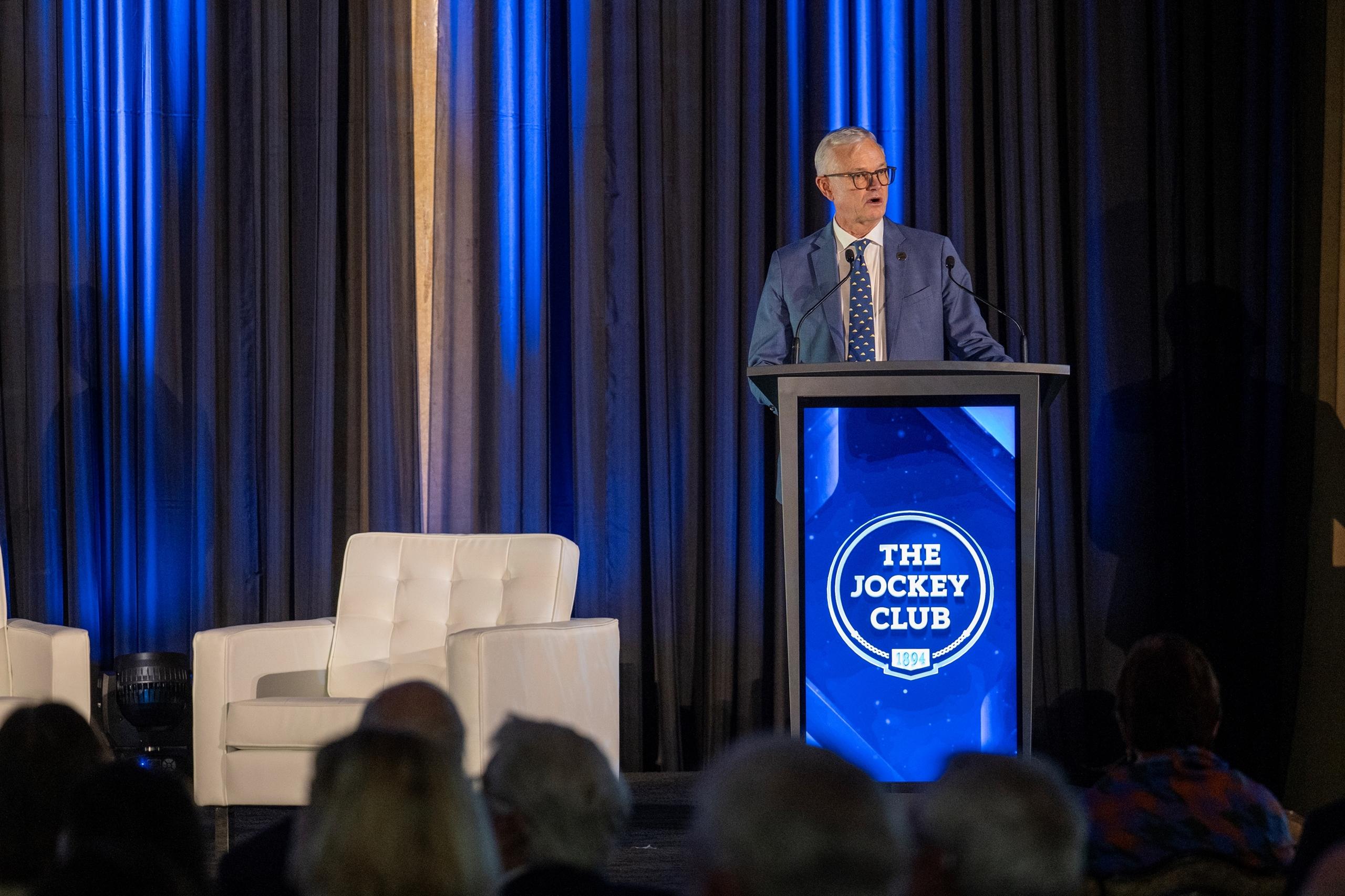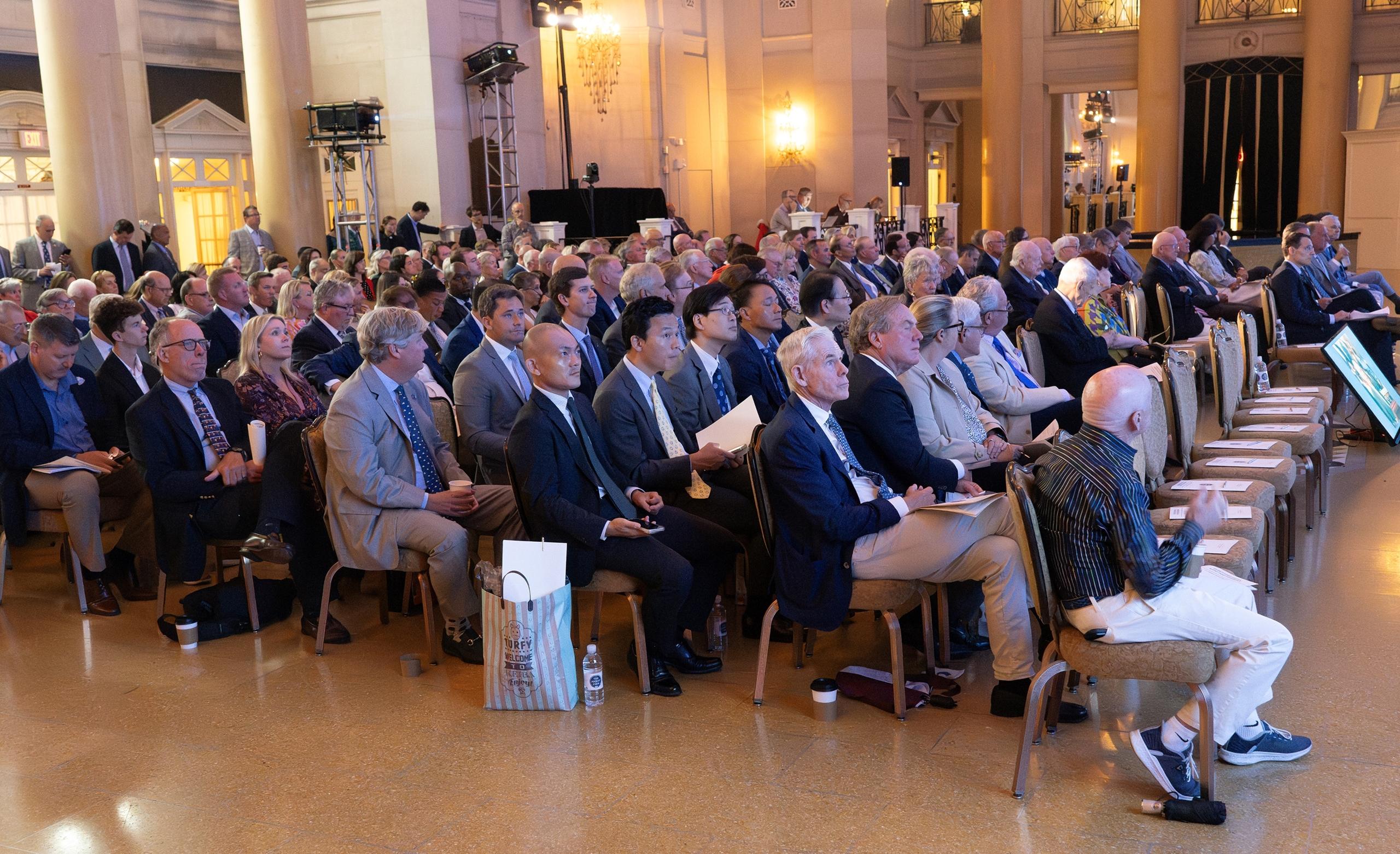
Beginner’s Guide to the 2026 Kentucky Derby

In his unveiling as chair of The Jockey Club, Everett Dobson outlined an organization focused on moving the sport forward to the benefit of everyone who participates in racing; committed to the Thoroughbred and the people in the racing industry.
Dobson, who became chair July 30, delivered that message during the keynote address at the 73rd edition of The Jockey Club’s Round Table Conference on Matters Pertaining to Racing July 31 at the Hall of Springs in Saratoga Springs, N.Y.
“Our first allegiance is to the Thoroughbred horse followed by the breeders, owners, racetrack operators, bettors, and everyone else who makes their living in this sport,” Dobson said. “To fulfill our mission, The Jockey Club must serve all of them fairly, equitably, and effectively.”
In working toward that goal, Dobson brings a diverse background within the industry and beyond. A longtime owner and breeder, he owns Candy Meadows Farm near Lexington and races under the Cheyenne Stables banner. A member of The Jockey Club since 2014, Dobson has served in leadership positions throughout the industry, including roles with the Thoroughbred Owners and Breeders Association and its American Graded Stakes Committee where he is the immediate past chairman. He also serves as a member of the Breeders’ Cup in addition to being a trustee of the Keeneland Association.
Beyond racing, Dobson is the executive chairman of telecommunications company Dobson Fiber, based in Oklahoma City where he is also an owner and board member of the NBA champion Oklahoma City Thunder. That familiarity with technology and understanding of sports business figures to be important for racing. Dobson pointed to declining handle as an indicator that changes are needed.
“The first metric that I think is perhaps the most telling is all-sources handle,” Dobson said while a projected graphic on a screen next to him showed declining wagering numbers in recent years. “One of the most telling indicators is handle. Handle matters. It drives racetrack profitability. It reflects on our competitiveness in the broader entertainment and gaming markets, and serves as a key barometer of our sport’s health.”
Before outlining a number of efforts — many of which will require industry cooperation — to turn around those numbers, Dobson noted that his predecessor as chair of The Jockey Club, Stuart Janney III, put racing in a position to focus on these initiatives by successfully addressing the all-important issue of equine safety. His efforts to bring the Horseracing Integrity and Safety Authority to reality have led to the sport’s safest years on record.
“I first want to take a moment to thank Stuart Janney for his many years of service to our sport, particularly his leadership over the last decade as chair,” Dobson said. “Under his guidance, we faced difficult challenges — some that would question the very existence of our sport. Our social license to operate was indeed on the line.
“Today, Thoroughbred racing is safer than ever, and we continue to push forward with other initiatives that will improve the sport, several which I will talk about today.”
Dobson touched on a number of those efforts, including:
While some of these plans are longtime initiatives for The Jockey Club, and others are new wrinkles to build on those longtime efforts, the announcement of a national marketing campaign is new. The sport has not had a national marketing campaign for many years. After Thursday’s address, Dobson said planning is just coming together on that effort.

“It’s in its infancy. It’s in the early discussion stages,” Dobson said. “It won’t be rolled out anytime quick but we’re going to get the right people in the room and see if we can collaborate on a message that that will lift all boats.”
As for the impact of inbreeding, in 2020 The Jockey Club backed a cap of 140 mares a season, beginning with stallions foaled in 2020. That effort would be abandoned following litigation filed in 2021 by three of Kentucky’s largest stud farms: Spendthrift Farm, Ashford Stud, and Three Chimneys Farm.
On Thursday, Dobson presented slides that indicated the problem has not gone away while calling for further study as well as further industry communication on the issue.
“As many of you know, The Jockey Club previously attempted to implement a cap on the number of mares a stallion could breed. While that effort did not succeed, the underlying concerns it aimed to address remain very real,” Dobson said as a slide showing a decline in North American stallions was displayed. “This slide illustrates the trends in North America. However, the phenomenon is happening worldwide. While the U.S. is the largest producer of Thoroughbreds, we only represent approximately 20% of the global foal crop. Whether you believe we’re facing a serious issue or not, it is critical that we keep this conversation going, and do so on a global scale.
“To that end, The Jockey Club in the United States is currently chairing the inbreeding task force of the International Stud Book Committee. Our focus is to dig deeper into the science and leverage emerging tools, including artificial intelligence and advanced technology, to better understand the long-term impact on the breed.”
Dobson said these efforts would not occur in an ivory tower and he will welcome feedback from stallion farms.
“I fully recognize the economic realities of the industry we operate in,” Dobson said. “My role is to preserve the integrity and help the breed while fostering an environment of innovation and investment.
“That’s why I plan to engage directly with the leading stallion farms, not only in the U.S. but around the world, to continue this important dialogue.”

The CAW issue also has been controversial as racing has seen these wagering teams account for billions of dollars of handle each year, accounting for 20%-30% of pools. While CAW money has helped sustain handle numbers, traditional players, often referred to as retail players, have raised concerns about CAW’s impact on race wagering, suggesting it has effectively raised the takeout on their action. Dobson said The Jockey Club hopes to facilitate a path forward.
“I plan to use this position to better understand the issue and try to help the industry strike the right balance that ensures growth, but does not disenfranchise the retail bettor,” Dobson said. “I look forward to my discussions with the interested parties in working toward practical solutions.”
Dobson noted that racing has had a number of success stories in recent years, including improved safety numbers, successful big-race days, increased opportunities for horses after their racing careers, and increased television coverage. As for the challenges? After the presentation, Dobson said he’s heard from a lot of people who are ready to address the industry’s issues.
“I highlighted in my presentation some very positive developments that are going on in the sport right now but I didn’t sugarcoat. I don’t think I sugarcoated things,” Dobson said. “There’s some challenges. We’ve got a lot of work to do, but I look around this room and see a lot of people that are committed to roll up their sleeves and make it work.”